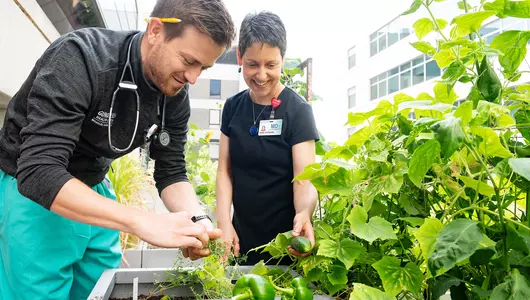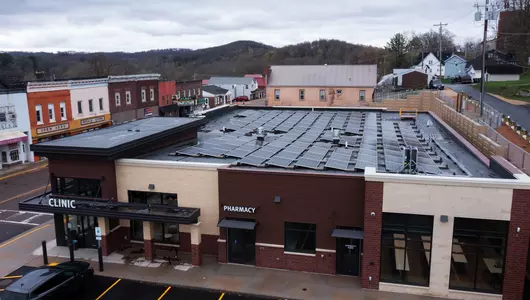
Geothermal Energy
Geothermal taps into the Earth’s natural heat to generate energy. We leverage thermal energy to adjust water temperatures and efficiently heat and cool our buildings. Here, we continue to utilize what is naturally available to us to lower energy use, which drastically reduces our dependence on fossil fuels and exposure to fuel price volatility.
The untapped energy beneath our feet
A geothermal heat pump uses the earth as either a heat or cooling source. The system takes advantage of the moderate temperatures underground to greatly improve the efficiency of our heating and cooling (HVAC) equipment. Our geothermal heat pump resulted in savings of 70 to 80 kBTU per square foot annually—by far the largest energy-saving component of the building.

How geothermal works
During the winter, water from the geothermal wells is sent to the geothermal heat pump. There, the energy from that water is used to add heat to the building. The water that had the energy removed is then sent back to the geothermal well to again have energy transferred to it from the earth. In the summer, the opposite occurs. The cool water inside the geothermal wells is sent to the geothermal heat pump, where energy is transferred from the building to the water. The warmed water is then sent to the geothermal wells to transfer its heat back to the earth. This results in an efficient way to cool the building.
News

Employee garden offers place to unwind, dig in the dirt

Gundersen Elroy Clinic reaches net zero status on energy use

Local partners launch 100% resilient and renewable energy healthcare campus project

Gundersen St. Joseph’s welcomes community to new Elroy Clinic
Send us your questions and ideas about environmental sustainability.



